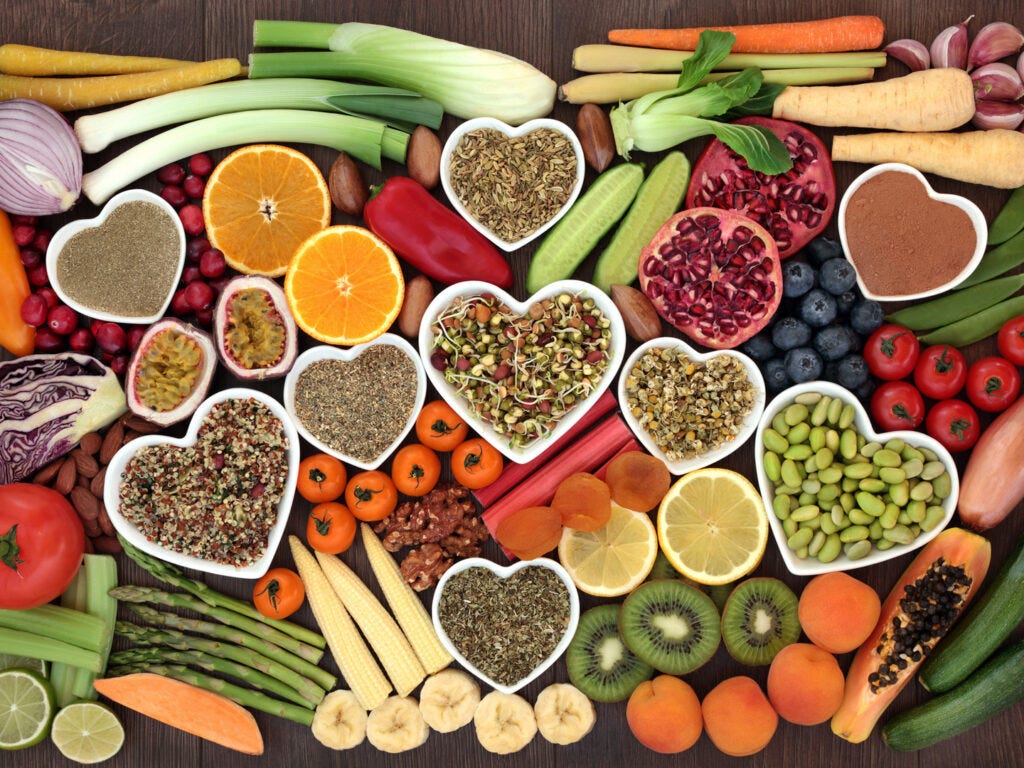Ayurvedic Nutrition: A Balanced Approach to Eating for Your Body Type
Ditch the Diet Trends—Discover How Ayurveda Helps You Build a Healthier, Sustainable Relationship with Food
One of the hottest topics in Ayurveda is nutrition. Many Americans have tried diet trend after diet trend trying to get a handle on their weight. Sometimes they work, sometimes they don’t, sometimes they make us feel bad, and sometimes we end up right back to where we started after the diet ends. What Ayurveda teaches us about nutrition involves preventative, practical, and personalized methods that keep us consistently feeling satisfied, eating right for our body type, and at a healthy weight.
It all starts with our relationship to food. Whether it’s feeling full and yet forcing ourselves to finish eating everything off our plate because that’s how we were raised, or not actually being hungry but eating anyway to satisfy some other need, the issue is that we are not aware of what’s ruling our decision-making. When we tune into our hunger levels like we would the fuel tank in a vehicle and start evaluating on a 1-10 scale with 1 being absolutely famished to 10 being overly stuffed full, we are able to make conscious choices about whether or not to eat. When we feel hungry, about a 3-4 on the scale, we can listen to the body and fulfill its needs, hopefully with healthy, fresh foods. If we tune in and are actually not hungry, we can take stock of what’s missing and find a way to feed that need instead. We may also find that we feel full, but not satisfied, and this often comes from either eating unhealthily or from missing one or more of the six tastes.
Eating unhealthily can include eating foods on the FLUNC list: Frozen, Leftovers, Unnatural, Nuked, Canned. These items should be avoided or at the very least, eaten in moderation or along with fresh, natural foods. And what are the six tastes? In Ayurveda, all foods have one or more of the following six tastes: sweet, sour, salty, pungent, bitter, and astringent.

Sweet foods are not just the sugary sweet candy we might think of but are the foods that help us build body mass. The elements of water and earth make up the sweet taste which includes carbs, fats, proteins, animal products, quinoa, grains, starchy vegetables, fruits, nuts, seeds, and honey. Sour foods are made up of the elements of fire and earth and include citrus, cheese, yogurt, fermented foods, and vinegar. These foods help to stimulate our digestive fire and put the good bacteria back in our gut. Salty foods include fish, sea vegetables, tamari, soy sauce, celery, other sauces, and sea salt. Salty foods contain the qualities of fire and water, which add heat and moisture to our diet. Pungent could also be known as spicy and as we know from sweating when eating a spicy meal, has detoxifying properties. Pungent foods possess the air and fire elements, and this taste is found in black pepper, hot peppers, garlic, onion, cinnamon, ginger, leeks, and chives. Bitter tastes are found in dark leafy greens, yellow and cruciferous vegetables, eggplant, turmeric, dark chocolate, and coffee. The space and air qualities present in bitter foods are light and cooling and also help in detoxifying the body. Finally, the astringent taste, which is made up of air and earth, therefore has drying and grounding qualities that help us to reduce water and calories. Beans, apples, pomegranates, cranberries, green & black tea, avocado, hummus, and coffee are some examples of the astringent taste – which you can feel has a drying effect on the tongue.
In my in-person classes, I love when we all get to try the examples of each taste and experience how they feel on the tongue. Do they make us salivate? Do they cause us to pucker? Maybe sweat a little bit? This way we understand what Ayurveda means when we hear that the foods hold certain qualities.
Another important lesson Ayurveda teaches is that “Like increases like, opposites balance.” We want to eat to balance our current state. Just like when the weather gets cold outside, we instinctively grab our sweater, our cozy socks, and a cup of warm tea. We don’t grab an ice-cold beverage and turn on a fan! We can take these same concepts into our diet. If we are feeling airy, spacy, and unable to get grounded, we need foods that are warm, heavy, and oily that will be more grounding for us. If we are having hot flashes, temper flares, or skin irritations, then we need to favor cooling, sweet, heavy, and dry foods to balance. And if we’re feeling lazy, lethargic, and like we just can’t drop the weight, we need to favor warm, dry, and light foods.
This is because we are all made up of the same five elements as mentioned in each of the six tastes! We are intrinsically part of nature and therefore we experience the qualities of air, space, fire, water, and earth. Depending on our constitution (or dosha) that is determined at conception, we all have varying degrees of each element present within us for life. These fundamental levels don’t change, but we can be influenced by things like the seasons in the natural world and our age. To find out your primary constitution (or Prakruti) take my free quiz here!
Once you know your primary dosha, you can come back here and follow these guidelines as a baseline:
Keep reading with a 7-day free trial
Subscribe to Soak It Up Healing to keep reading this post and get 7 days of free access to the full post archives.





